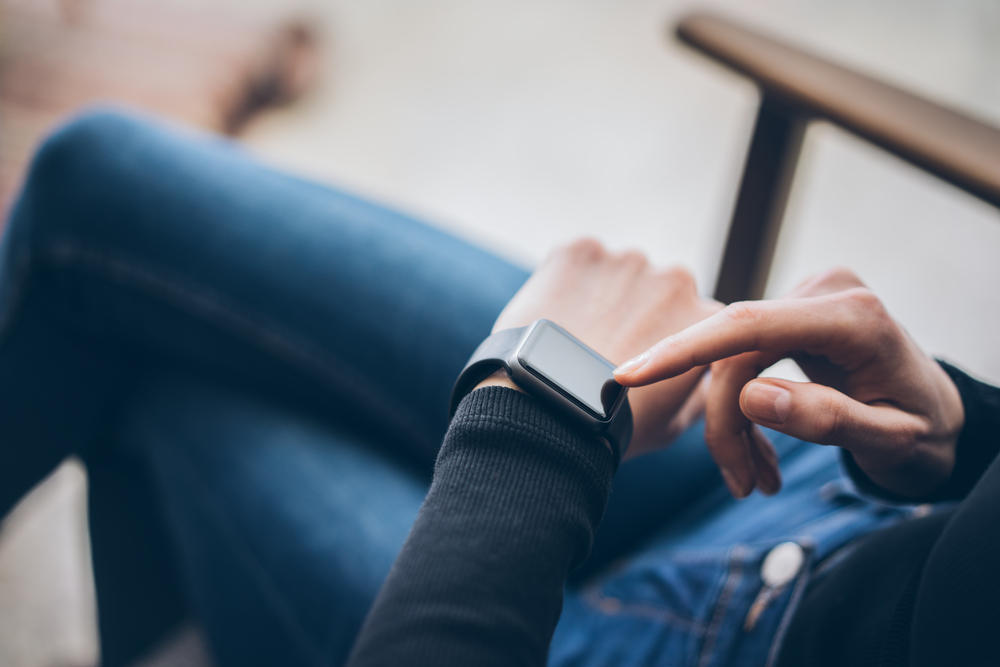Wearable PKG System Can Help Identify Parkinson’s Patients Eligible for Device-Assisted Therapy, Study Shows

Data collected through Global Kinetics Corporation’s wearable device called Personal KinetiGraph (PKG) can help clinicians identify Parkinson’s patients who may benefit from deep-brain stimulation (DBS) or other device-assisted therapies.
This finding was reported in the study, “The Use of Data from the Parkinson’s KinetiGraph to Identify Potential Candidates for Device Assisted Therapies,” published in the journal Sensors.
The PKG system is a wristwatch-like device worn on the side of the body that is most affected by the disease and continuously collects patients’ movement data — such as tremors, slow or involuntary movements, motor skill fluctuations, and immobility.
The device has been cleared by the U.S. Food and Drug Administration and holds CE certification, meaning it meets European safety, health, and environmental protection requirements. Global Kinetics recently announced that its PKG-Watch was recommended by two separate expert panels to improve the clinical management of Parkinson’s disease.
PKG movement data can provide detailed information on the progression of patient’s motor symptoms, as well as on the effectiveness of available therapies to manage them.
Researchers have now evaluated if PKG data could also be used as a screening tool to identify Parkinson’s patients who may benefit from device-assisted therapies (DAT) such as deep-brain stimulation.
“Despite broad consensus as to the criteria for selecting DAT candidates, non-specialists have difficulty in recognizing these criteria. Many [people with Parkinson’s disease] in whom fluctuations are emerging are managed by non-specialists and consequently, suitable DAT candidates are not referred in a timely manner,” the researchers wrote.
The potential for DATs to effectively help manage Parkinson’s symptoms relies mainly on treatment timing, with delays meaning that “suitable candidates may have shorter benefit from DBS or worse still, miss out entirely,” they said.
In fact, “as many as 67% of patients referred for DBS are unsuitable for the procedure yet only 1% of people with Parkinson’s disease receive DBS, even though as many as 20% may, in fact, be eligible,” they added.
“Although there is broad consensus with respect to the criteria for selecting PD patients who will benefit from DBS, these symptoms may be difficult for physicians to identify when relying on patient self-report or in-clinic exam findings that may not reflect the spectrum of the individual’s symptoms and result in treatment delays,” Fatta Nahab MD, associate professor of neurosciences at the University of California San Diego, said in a press release.
Now, researchers at the University of Melbourne in Australia, in collaboration with Global Kinetics, developed a new assessment score, which they call the DAT score. This tool was designed to specifically predict the likelihood that a Parkinson’s patient is a suitable candidate for DAT based on PKG movement data.
An initial group of 172 patients with Parkinson’s was evaluated by a clinical team who identified them as either suitable or not suitable for DBS treatment. Those who were positively selected for DAT were younger and had worse motor symptoms, measured by Unified Parkinson’s Disease Rating Scale (UPDRS) scores.
All patients were asked to use the PKG device, which continuously recorded their movement data. Based on the collected data and according to the initial clinician’s assessment, the researchers selected the most useful parameters that allowed them to differentiate patients who were positively selected for DAT from those who would not be eligible.
The feasibility and accuracy of the DAT score was then tested in a second group of 31 patients with Parkinson’s who had been selected to undergo DBS, 81 patients who were managed in a non-specialist clinic, and 22 patients who had been diagnosed within the past five years.
PKG data was highly sensitive and specific for classifying Parkinson’s patients for DAT eligibility based on the recommendations of specialist clinicians.
Furthermore, the PKG-based DAT score was able to correctly identify 87% of patients who were referred for DAT, namely DBS, in different clinical settings, 92% of patients managed in a non-specialist clinic, and 100% of patients who were within the first five years of diagnosis.
Importantly, DAT scores changed as expected when therapeutic interventions were sufficient to resolve troublesome motor fluctuations or dyskinesia (involuntary movements) that would otherwise have required DAT.
These results demonstrate that “[movement] information from objective measurement [with the PKG device] could improve timely referral for DAT,” the researchers wrote.
“The lack of objective measurements for Parkinson’s symptoms has been a barrier to optimizing care and outcomes for Parkinson’s patients across the continuum of disease,” said John Schellhorn, CEO of Global Kinetics Corporation. “Objective, reproducible assessment methods that allow for data-driven clinical decision-making in the treatment of Parkinson’s can help benefit patients, physicians and overall healthcare costs.”






